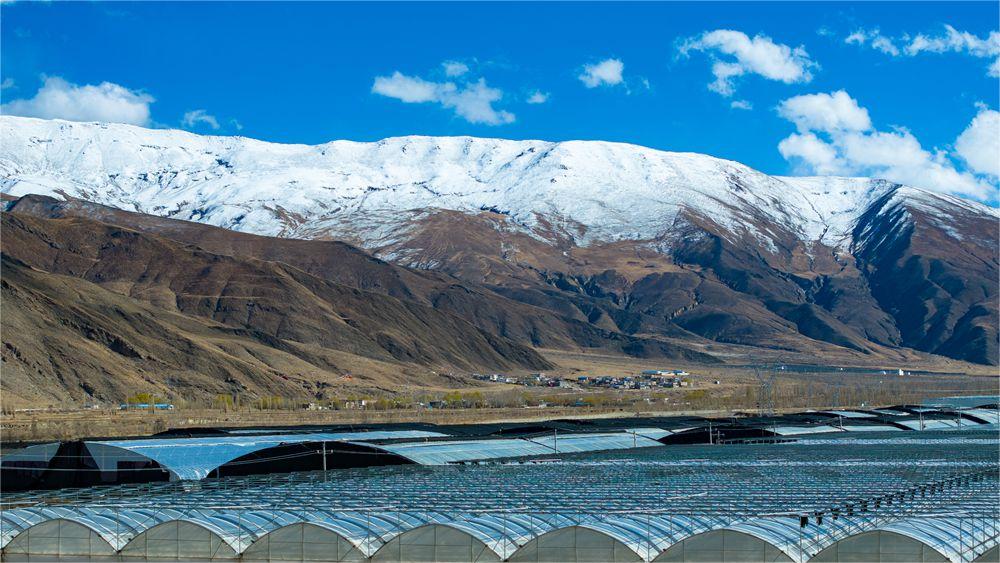Analysis: Does China really have excess clean energy products?
Soon after U.S. Treasury Secretary Janet Yellen returned to the U.S., German Chancellor Olaf Scholz visited China. Both brought up the so-called "China overcapacity" during their China visits.
Speeches by Yellen in Beijing disclosed that she believes that China's clean energy products, including solar power, electric vehicles and lithium-ion batteries, exceed China's domestic demand, as well as what the global market can bear, which depressed market prices and hurt workers and manufacturers in the United States.
However, is it true? Does China really have an excess of clean energy products when the world is gripped with climate challenges and urgently needs a green transformation?
Capacity utilization rate is a key metric for production capacity. Official data from the U.S. and China show that the two countries' industrial capacity utilization rates have been very close in recent years. Data from China's National Bureau of Statistics shows that in the fourth quarter of 2023, China's industrial capacity utilization rate was 75.9 percent, while data from the Federal Reserve shows that the U.S. utilization rate stood at 78.8 percent in the same period.
A utilization rate of 100 percent indicates that the organization reaches its maximum utilization. It's generally believed that 80 percent is a normal figure for utilization rate.
Yellen also claimed that China's new energy vehicles (NEVs) are excessive, while data shows that the production and export of Chinese electric vehicles (EVs) are not only less than that of petrol vehicles but also less than those of other major global car makers.
For example, China exported a record 4.91 million vehicles in total in 2023, as reported by the China Association of Automobile Manufacturers. Over 3.7 million cars (75.5 percent) are conventional petrol vehicles, and 1.203 million (24.5 percent) are NEVs, including hybrids that combine battery power and internal combustion engines.
What's more, Chinese carmakers manufactured a total of 30.261 million vehicles in 2023, among which 9.587 million were new energy vehicles, which is close to the global sales of single car manufacturers such as Japan's Toyota which sold 11.233 million vehicles in 2023 and Germany's Volkswagen Group which sold 9.24 million cars in 2023.
Meanwhile, China's clean technology products, such as EVs, solar panels and lithium-ion batteries, only comprise a small share of China's exports, roughly 4.5 percent last year. Official data from China's General Administration of Customs shows that China's export of goods reached 23.77 trillion yuan (about $3.35 trillion) in 2023, in which the export of electric vehicles, lithium-ion batteries and solar panels totaled 1.06 trillion yuan. China also earned less export revenue from EVs in 2023 than from products such as suitcases, backpacks, furniture and toys.
During Scholz's visit to Beijing, Chinese Premier Li said having production moderately greater than demand is conducive to full market competition and promoting survival of the fittest in the market. Taking Tesla as an example, the company established its first gigafactory in Shanghai outside the U.S. in January 2019. Since then, it kept expanding its production capacity in China, which resulted in the fast growth of Chinese EVs and stimulated them to strengthen its competitiveness.
Premier Li stressed that China's new energy industry has gained advantages through self-improvement and sufficient market competition rather than government subsidies. He also stated that, from a global perspective, the production capacity of different countries is determined by their comparative advantages.
The economic principle of comparative advantages says that if a country can manufacture goods at lower costs, other countries should import the goods because it's good for consumers, and in return, the country can send back something where its industry is more efficient. For example, before the China-U.S. trade friction started, the U.S. in 2017 exported 57 percent of its soybeans, 25 percent of aircraft, 20 percent of automobiles, and 17 percent of cotton to China, which are all U.S. advantage industries.
Moreover, as the world grapples with climate challenges, decarbonization has become a global consensus. Clean energy products around the world are considered far from sufficient.
In November last year, a joint statement by China and the U.S. agreed to triple renewable energy capacity globally by 2030 after a meeting between China's Special envoy for climate change, Xie Zhenhua, and U.S. climate envoy John Kerry in Sunnylands, California. The U.S. has long been pressuring China to phase out fossil fuels and reduce its carbon emissions, and China has promised to reach a peak in its carbon dioxide emissions before 2030 and achieve carbon neutrality by 2060.
Liao Min, China's vice minister of finance, said in a press briefing that China's affordable green tech products help China meet its own carbon emission goals and contribute to the global response to climate change and green development.
Experts analyzed that the reason the U.S. and some European countries view China's green tech products as a problem is politics and market competition, as their major domestic car companies have quietly soured on the energy transition over the same period.
"The U.S. and the EU also subsidize their companies and industries, and it's part of the game. But China seems like the only one taking the blame," Brazilian scholar Marco Fernandes told CGTN in a recent interview, adding that "this double standard is all about market competition."
Photos
Related Stories
- Letter from China: Earth Hour: Lights off, green action on
- High-altitude Maerdang Hydropower Station in Northwest China starts operation
- China's energy-rich provinces embark on green, modern development path
- Chinese clean energy firms continue overseas expansion amid challenges, opportunities
- Chinese scientists design device to produce hydrogen from renewable sources
- World's largest green, clean, renewable energy base surpasses cumulative power generation of 1 trillion kilowatt-hours
Copyright © 2024 People's Daily Online. All Rights Reserved.









